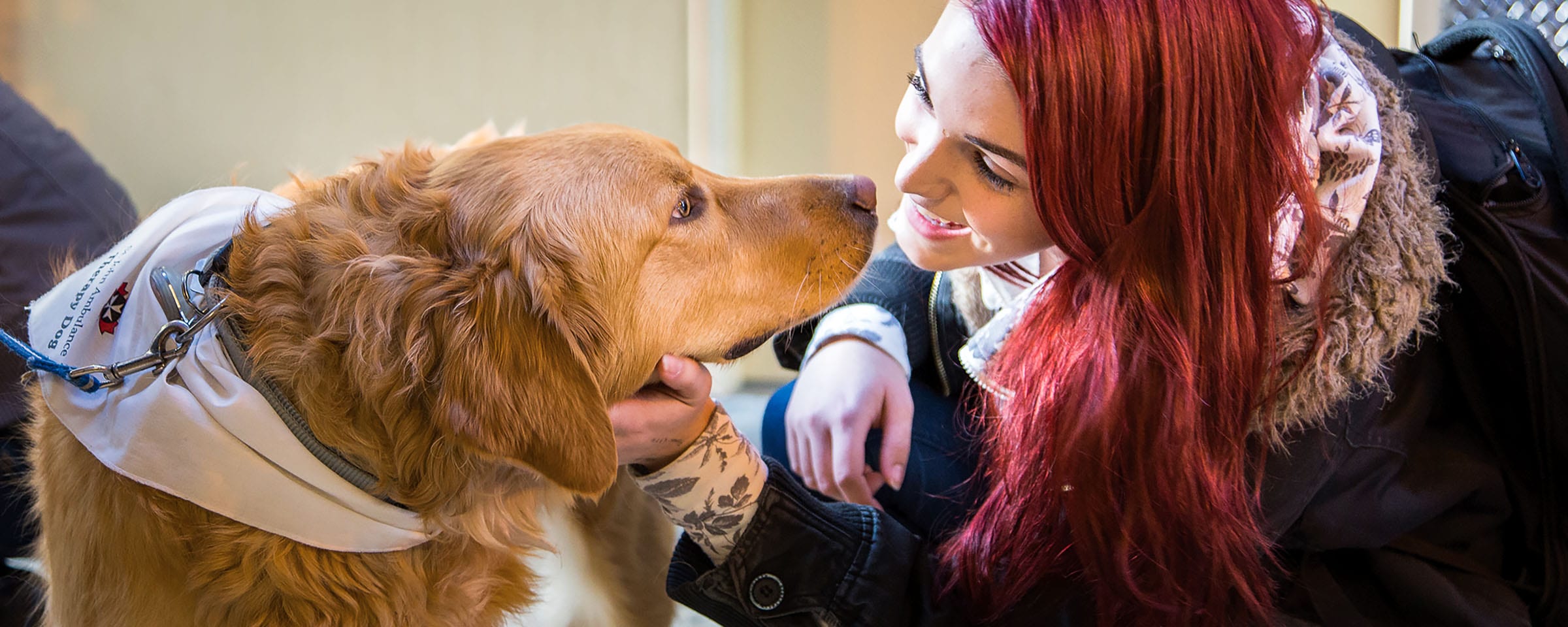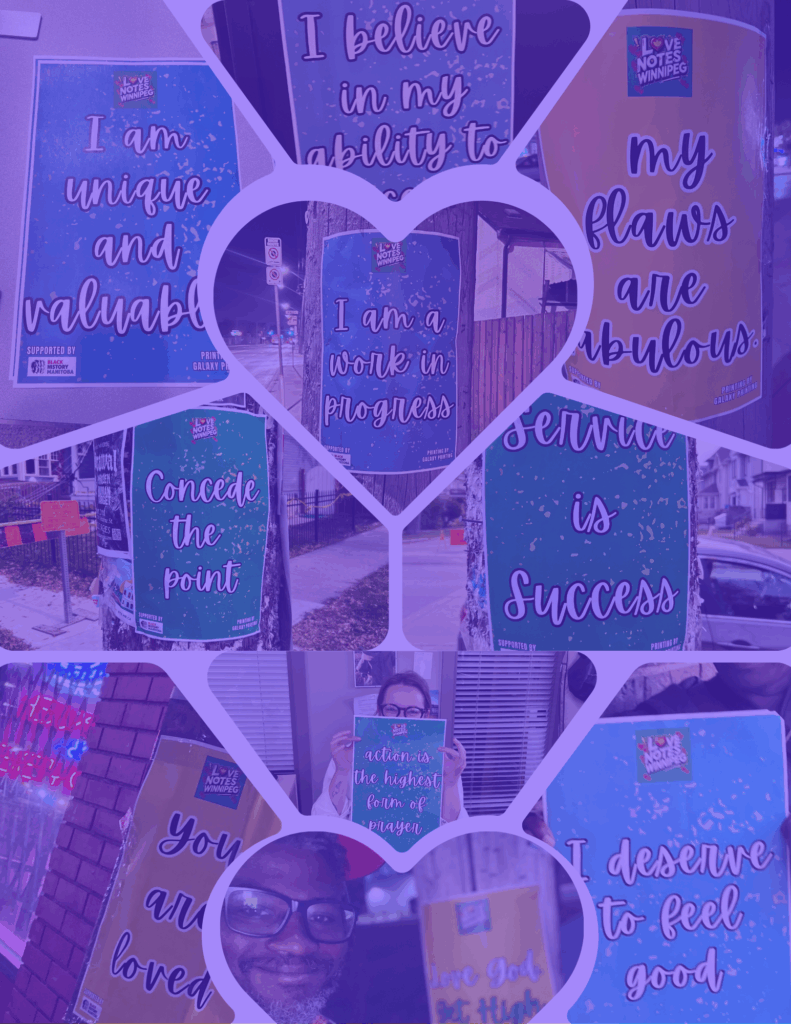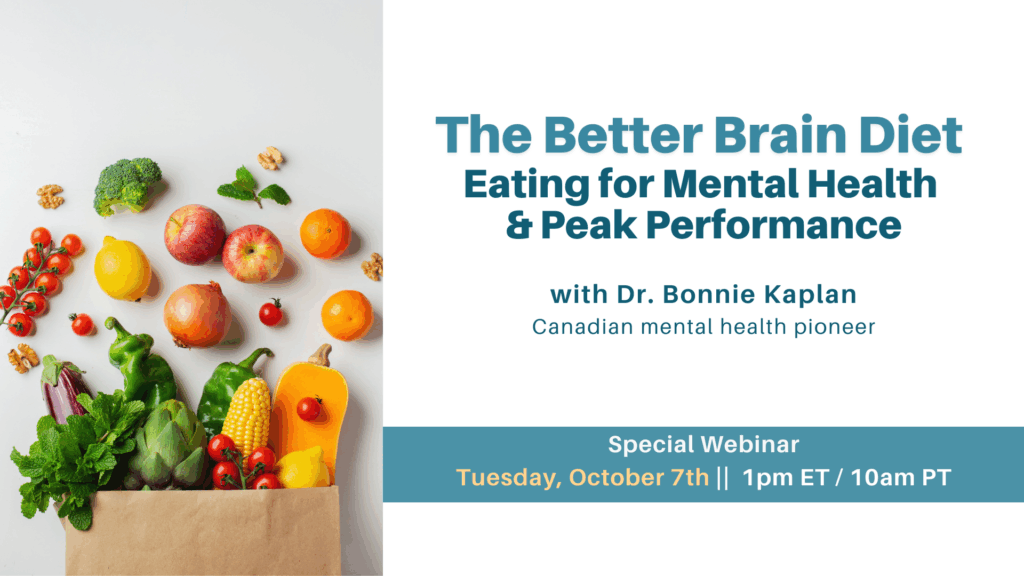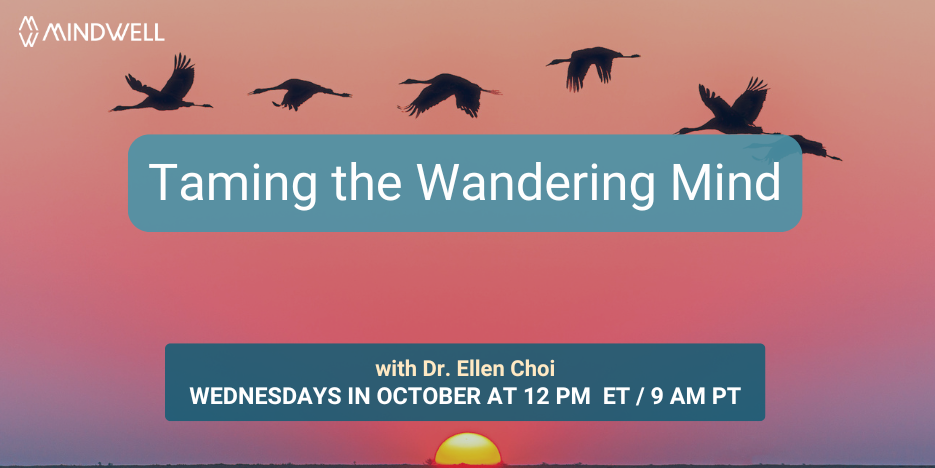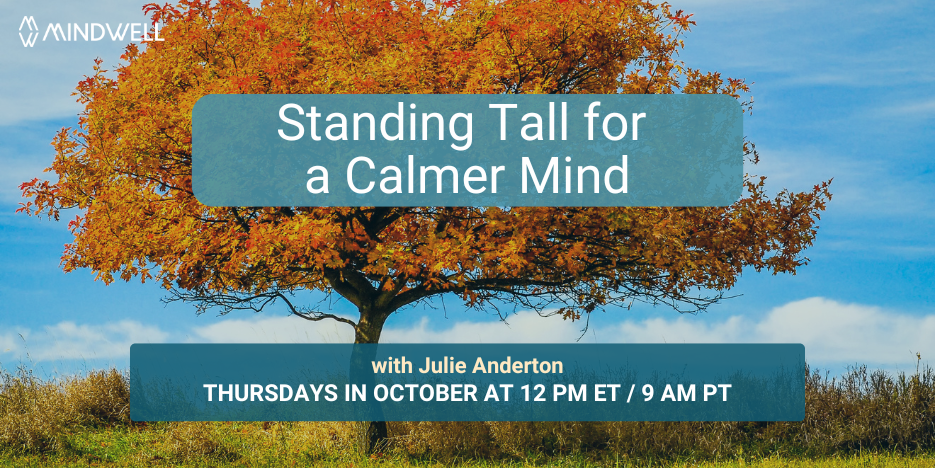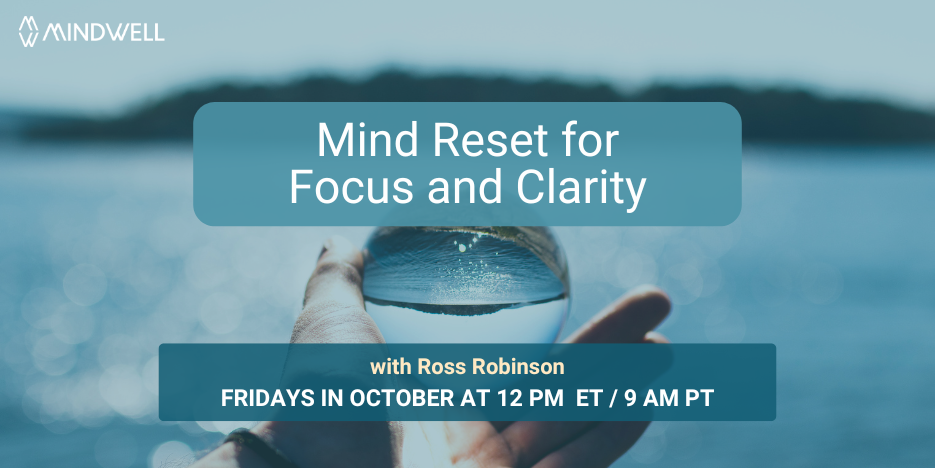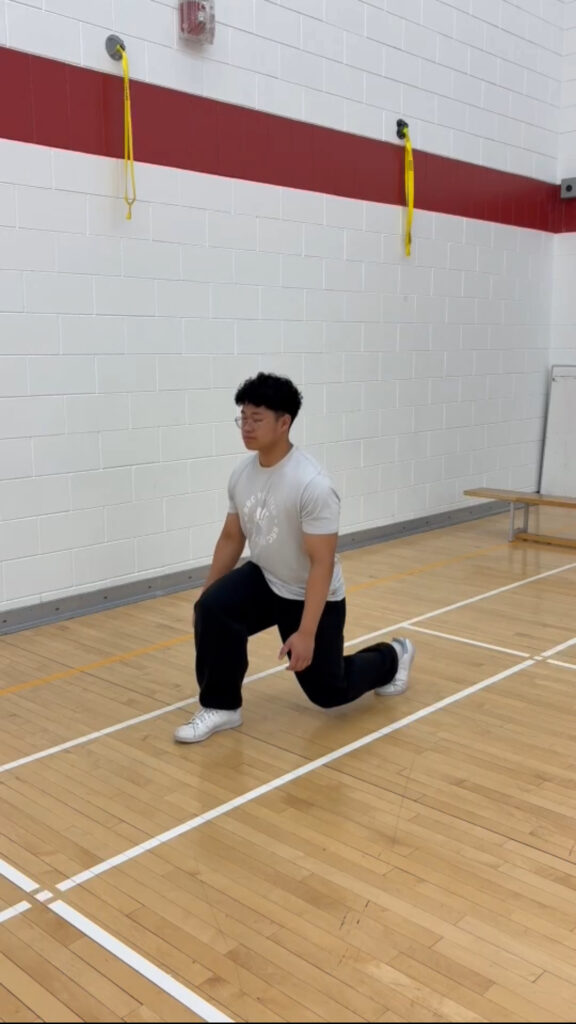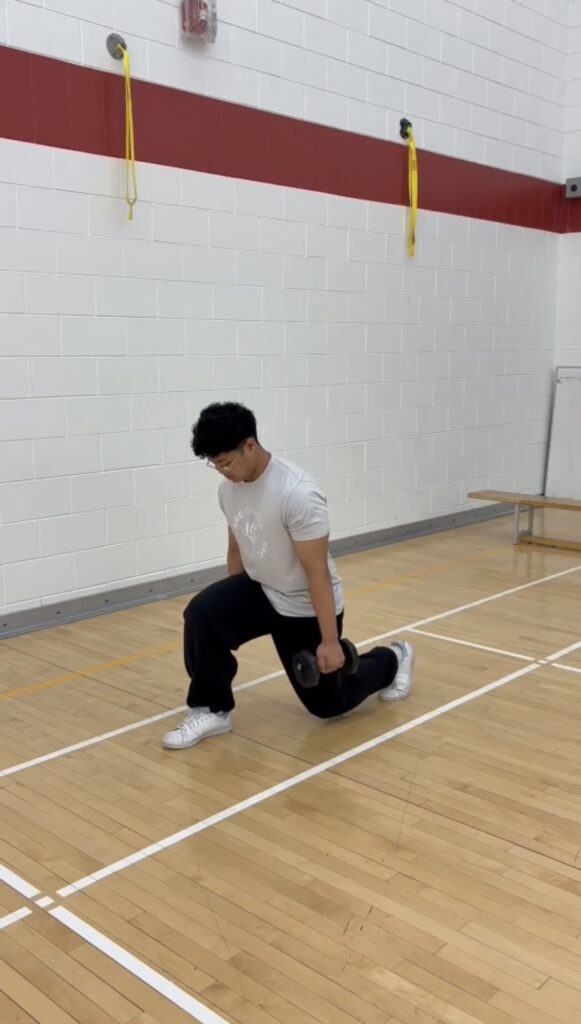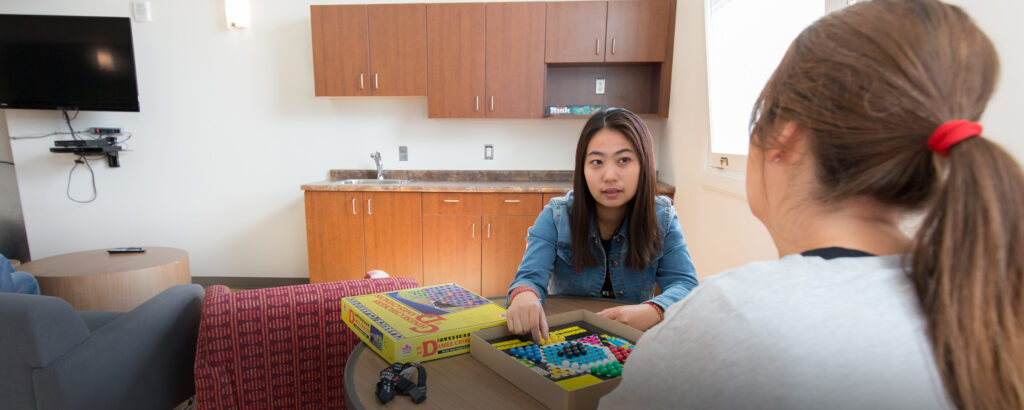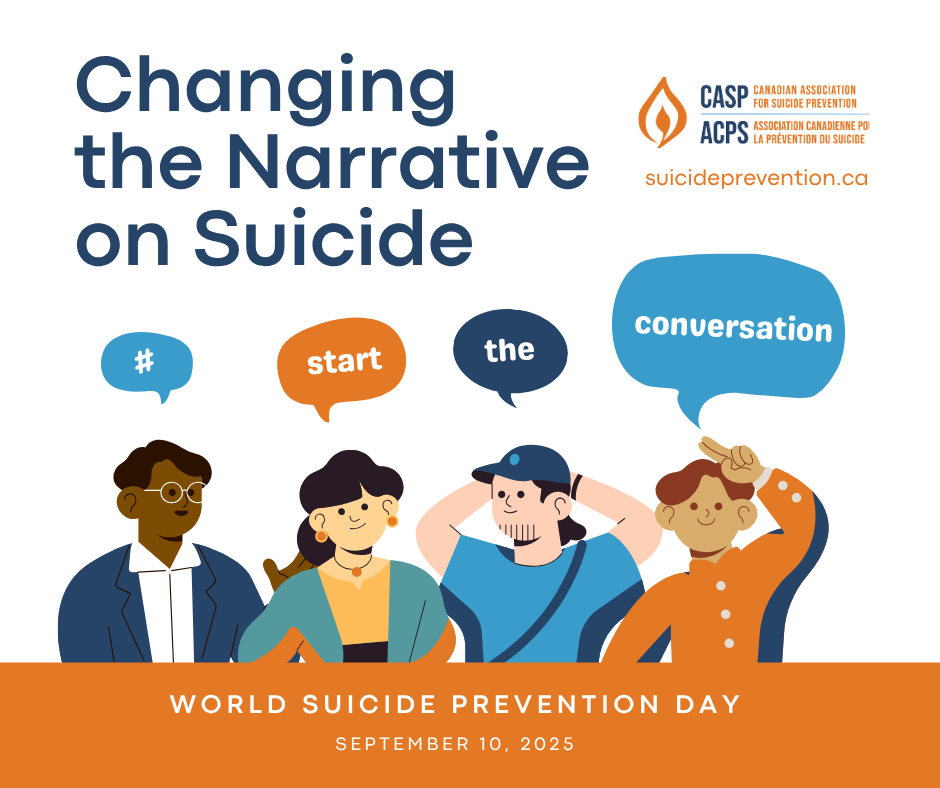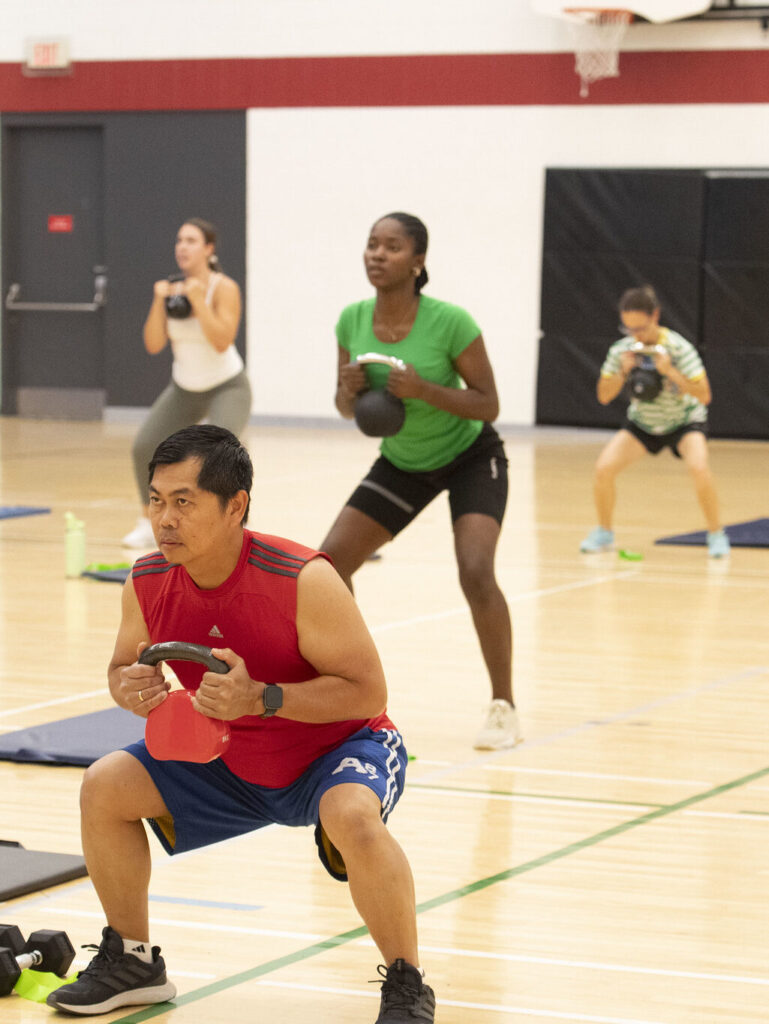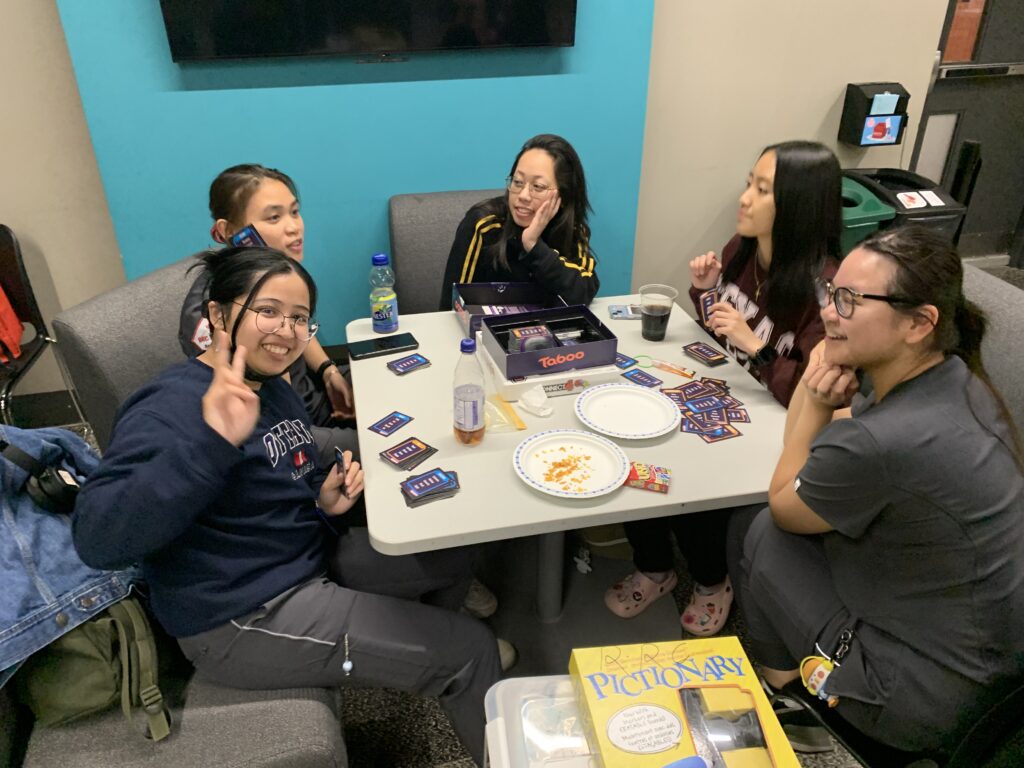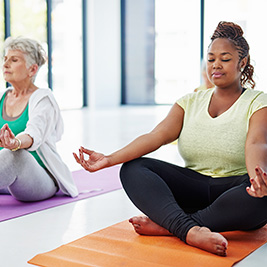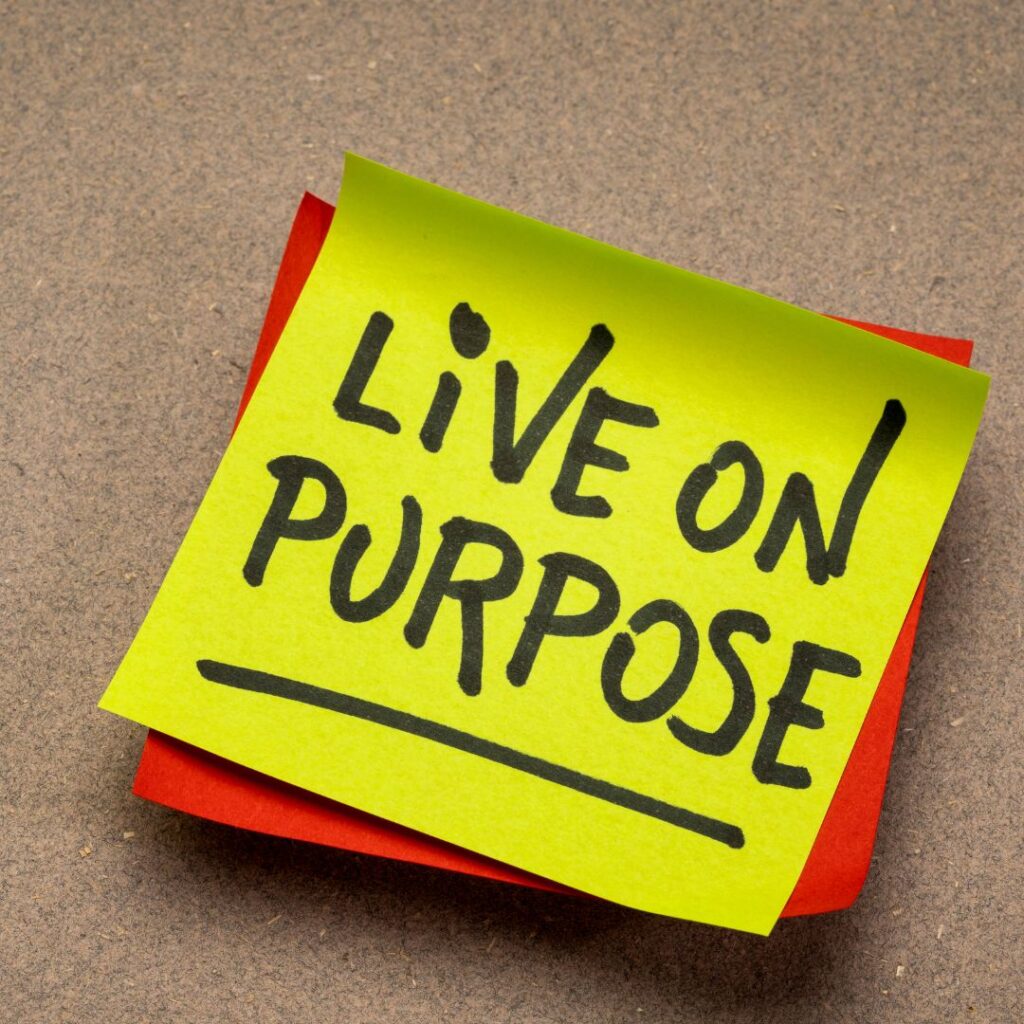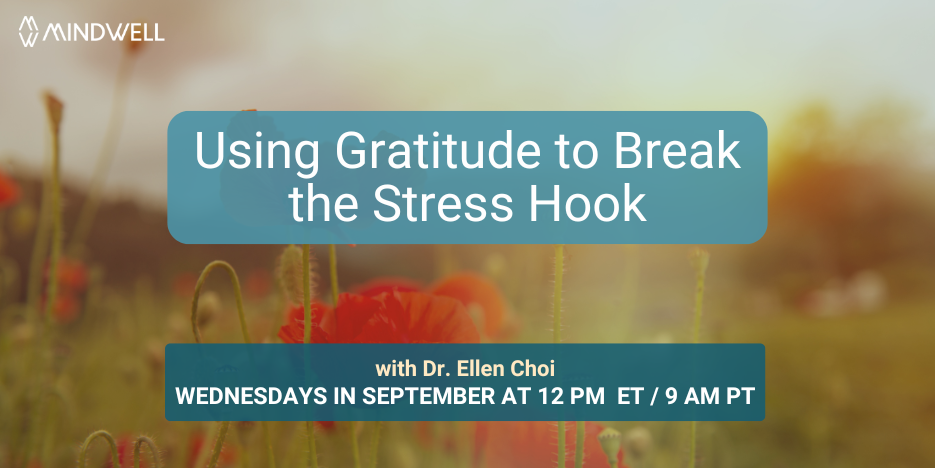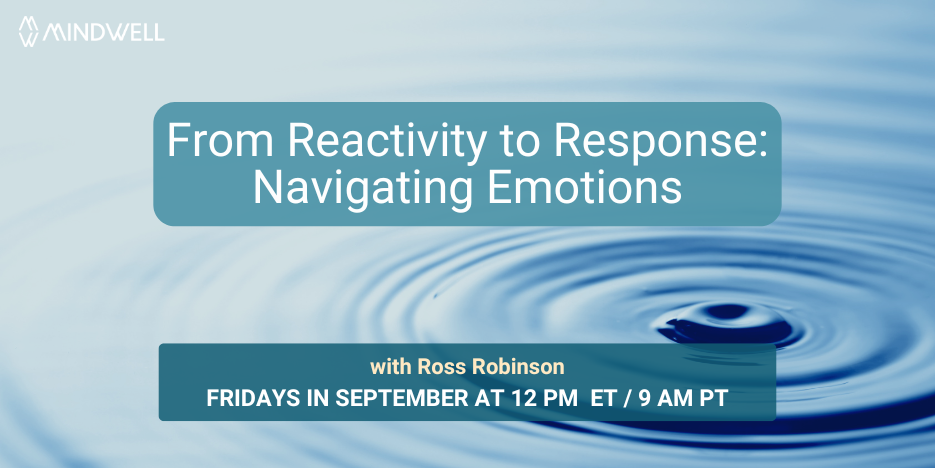Thrive Week – Nov 3 to 8, 2025
Thrive Week is your chance to pause, recharge and have fun with free events that spark creativity, connection and calm. Join in to find simple, everyday ways to care for your mental health, stay balanced and feel your best at school, work and beyond.
For All Campuses, Students and Staff
Participate in one of our events: Feast and Friends, DIY fidget making, The Amazing Race, Mini Massages, Cat Café, Mini Golf, Games and Popcorn Lunch, Library Puzzles/Colouring stations and a FortWhyte Alive Wellness Walk. Check out the calendar and listings below for details and registration links.
Door prizes are available at some of our events – register and participate to win!
Hosted by Campus Well-Being and the Students’ Association. For questions or accessibility needs, please contact Kristi Dorian.
Wellness Bingo! Save your hardcopy Thrive Week postcard for NDC and EDC – Collect a stamp for each event you attend then drop it off at the NDC North Gym or EDC Fitness Centre by Nov 14 to enter a grand prize draw for a $100 gift card.
NDC Calendar at a Glance
| NDC Mon, Nov 3 | NDC Tues, Nov 4 | NDC Wed, Nov 5 | NDC Thurs, Nov 6 | NDC Fri, Nov 7 | Sat, Nov 8 |
| Library Craft & Puzzle Station 10am-3pm | Library Craft & Puzzle Station 10am-3pm | Library Craft & Puzzle Station 10am-3pm | Library Craft & Puzzle Station 10am-3pm | Library Craft & Puzzle Station 10am-3pm | |
| From Wood to Wellness: DIY Fidget Workshop* 11:15am & 12:15pm B1-24 Annex Muscle & Mobility Fitness Class 12:10 to 12:50pm North Gym | Mini Golf 11am-1pm Library Hallway Strength & Conditioning Fitness Class 12:10 to 12:50 North Gym | Cat Café* 11:30am to 1:30pm E108 Gentle Flow Yoga* 12:10 to 12:50pm Immersion Room/Virtual | Jig’n Time with Dean Davis* 12 to 1pm F205 Mini Massages* 11:30am to 1:30pm The Cave Strength & Conditioning Fitness Class 12:10 to 12:50 North Gym | Games and Popcorn Lunch 11:30am to 1:30pm The Cave | FortWhyte Alive Wellness Walk* 9:30am to 2pm |
| Feast and Friends* 4-6pm The Cave | Amazing Race – Mini Game Competition* 4pm to 6pm Library |
*Registration Required (links below in event details)
EDC Calendar at a Glance
| EDC Mon, Nov 3 | EDC Tues, Nov 4 | EDC Wed, Nov 5 | EDC Thurs, Nov 6 | EDC Fri, Nov 7 | Sat, Nov 8 |
| Library Craft & Puzzle Station 10am-3pm | Library Craft & Puzzle Station 10am-3pm | Library Craft & Puzzle Station 10am-3pm | Library Craft & Puzzle Station 10am-3pm | Library Craft & Puzzle Station 10am-3pm | |
| Métis Style Beading with Lucy Lindell* 12:30 to 1:30pm Roundhouse E240 Hatha Yoga* 12:10 to 12:50 E155 | K-Pop Dance Class* 12 to 1pm P107 | Games and Popcorn Lunch 11:30am to 1:30pm Dining Hall Mini Massages* 11:30am to 1:30pm P107 Gentle Flow Yoga* 12:10 to 12:50pm Virtual | Mini Golf 11am to 1pm Library P214 | Cat Café* 11:30am to 1:30pm P107 | FortWhyte Alive Wellness Walk* 9:30am to 2pm |
| Feast and Friends* 4-6pm E235/E236 |
*Registration Required (links below in event details)
Regionals Calendar at a Glance
| Mon, Nov 3 | Tues, Nov 4 | Wed, Nov 5 | Thurs, Nov 6 | Fri Nov 7 |
| Métis Style Beading with Lucy Lindell* 12:30 to 1:30pm (Live-Streamed) | A Hole in One! 12 to 12:30pm Prize for the best golfer. | DIY Friendship Bracelets 12 to 12:30pm Gentle Flow Yoga* 12:10 to 12:50pm Virtual | Quiz Time 12 to 12:30pm Gather your partner to make a team of two. Prize for the most correct answers. | Team Challenge 12 to 12:30pm Gather your partner to make a team of two. Prizes for the winners. |
Ongoing All Week
Bookmark Making, Puzzles and Colouring Stations (EDC and NDC)
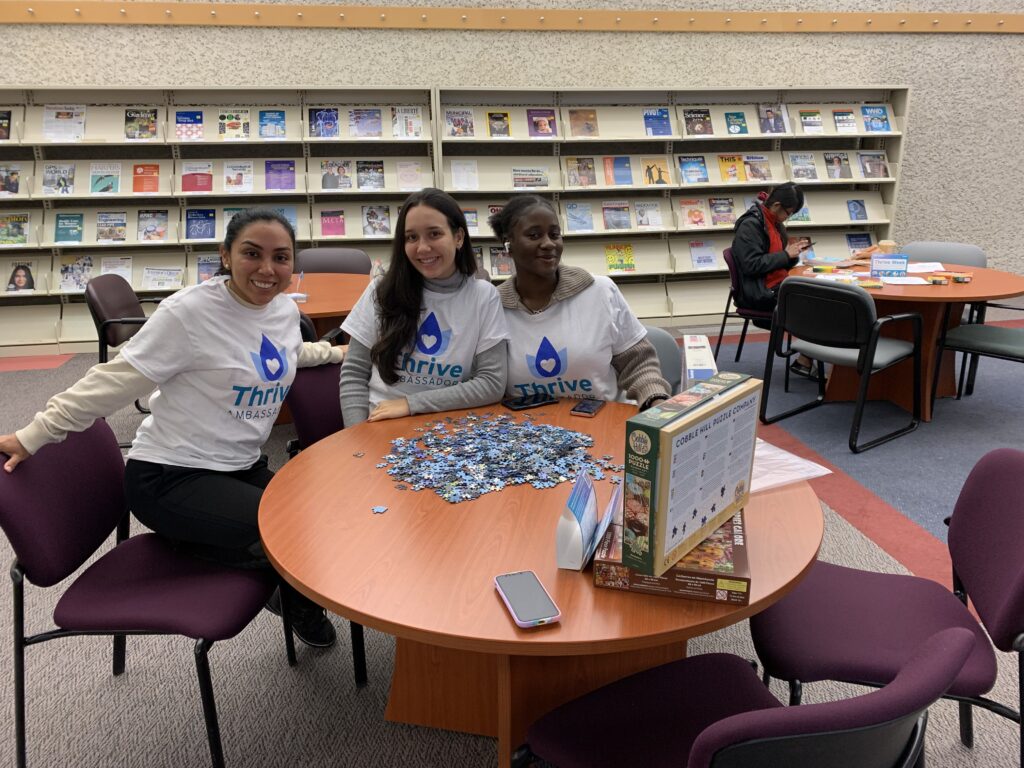
Take a break from reading, PowerPoints, and hybrid classes with puzzles and colouring pages provided for your relaxation. Create an inspirational bookmark with the provided supplies.
Drop-in to the Notre Dame Campus and Exchange District Campus libraries anytime.
Healthy Minds, Healthy College Book Collection (All Campuses)
Check out a book or ebook from the Healthy Minds, Healthy College collection (see display at NDC library).
Including:
- Aki-Wayn-zih : A Person As Worthy As the Earth
- Psychology of physical activity : determinants, well-being and interventions
- The medicine path : a return to the healing ways of our indigenous ancestors
- The gifts of imperfection let go of who you think you’re supposed to be and embrace who you are
- Healing through the dark emotions : the wisdom of grief, fear and despair
- Peace is every step : the path of mindfulness in everyday life
- College students’ sense of belonging : a key to educational success for all students
Monday
From Wood to Wellness: DIY Fidget Workshop (NDC)
Connect. Create. Relax. Active – Thrive.
Need a break from the college grind? Join us for a hands-on, stress-busting workshop where creativity meets self-care. In this fun and beginner-friendly session, you’ll learn basic woodworking techniques and craft your own custom wooden fidget – a simple tool that helps with focus, stress relief, and mindfulness.
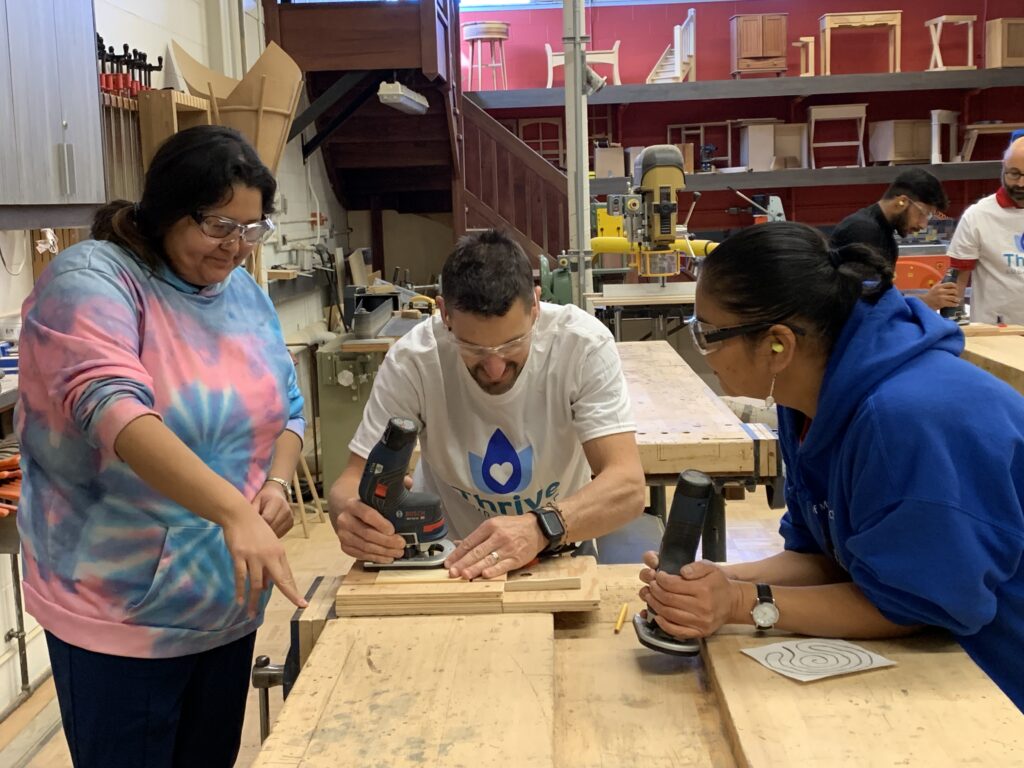
This workshop offers a chance to:
- Unplug and unwind through creativity
- Build something useful and personal
- Connect with others in a relaxed, supportive space
- Leave with a unique item that supports your mental wellness
No experience needed – we provide all the tools, materials, and guidance. Just bring yourself and a willingness to try something new. Open to all students, faculty and staff.
Sign up early to secure your place! Drop-ins welcome if space available.
REGISTER – Monday, November 3, 2025, Notre Dame Campus in B1-24 Annex.
Please pick only ONE of two possible sessions:
- Session one – from 11:15 to 12pm
- Session two – from 12pm to 12:45pm
Please wear runners or boots (closed-toed footwear) and long pants. All other materials supplied.
Métis Style Beading Workshop with Lucy Lindell (EDC)
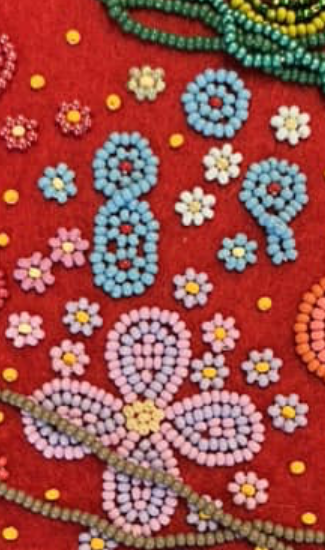
The word for bead in Indigenous languages translates to “spirit” and “spirit berry.” In this workshop, beading techniques will be shared along with spirit relations. Through beading and acknowledgement, we can take steps to grow and repair our spirit relations in a good way. One bead at a time, we can bead ourselves back into Creation.
REGISTER – Monday, Nov 3, 2025, 12:30pm to 1:30pm, Exchange District Campus, Roundhouse Room E240
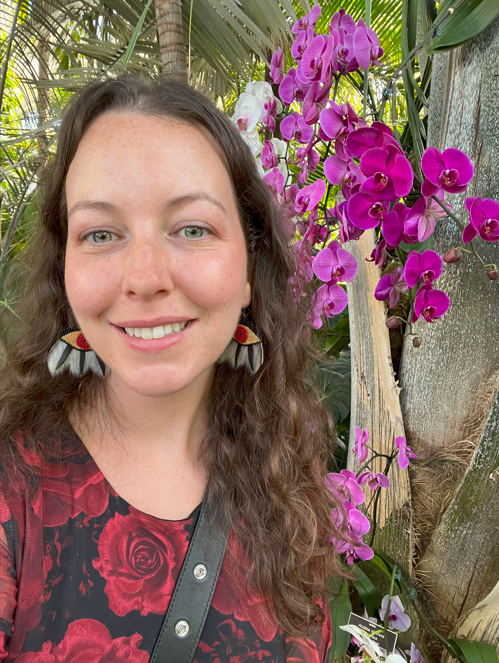
Lucy Lindell (she/her) is a Métis free-hand beadwork artist and instructor from the Turtle Clan, raised in Eriksdale, Manitoba. She began to bead in 2019 with Lawrie Barkwell and moved between beading free-hand and with designs that were shared with the Louis Riel Institute.
Beading became a way for Lucy to reconnect with her body and identity, helping her find hope and healing through every bead. Lucy enjoys sharing her culture and ways of knowing. She serves as a helper at the sweat lodge and Sundance. As well, Lucy is completing her Masters in Peace and Conflict Studies with a memoir and auto-ethnography-based thesis titled Beaded and Braided Stories: The Need for Reflection on Everyday Peace and Conflict.
Hatha Yoga (EDC)

Hatha yoga for all! In this class students practice traditional standing, seated and laying down postures. We will move at a medium pace with a focus on mind, body and breath with instructor Philip Rosario.
In Person Only. No experience is necessary. Suitable for all levels and mats are provided. Registration required.
REGISTER – For Thrive Week Monday, Nov 3, 2025, Exchange District Campus, E155, 12:10 to 12:50pm
Tuesday
K-Pop Dance Class (EDC)
Step into the spotlight and feel the energy of K-Pop! This class grooves with high-energy choreography inspired by your favorite idols and music videos, blending rhythm and expression.
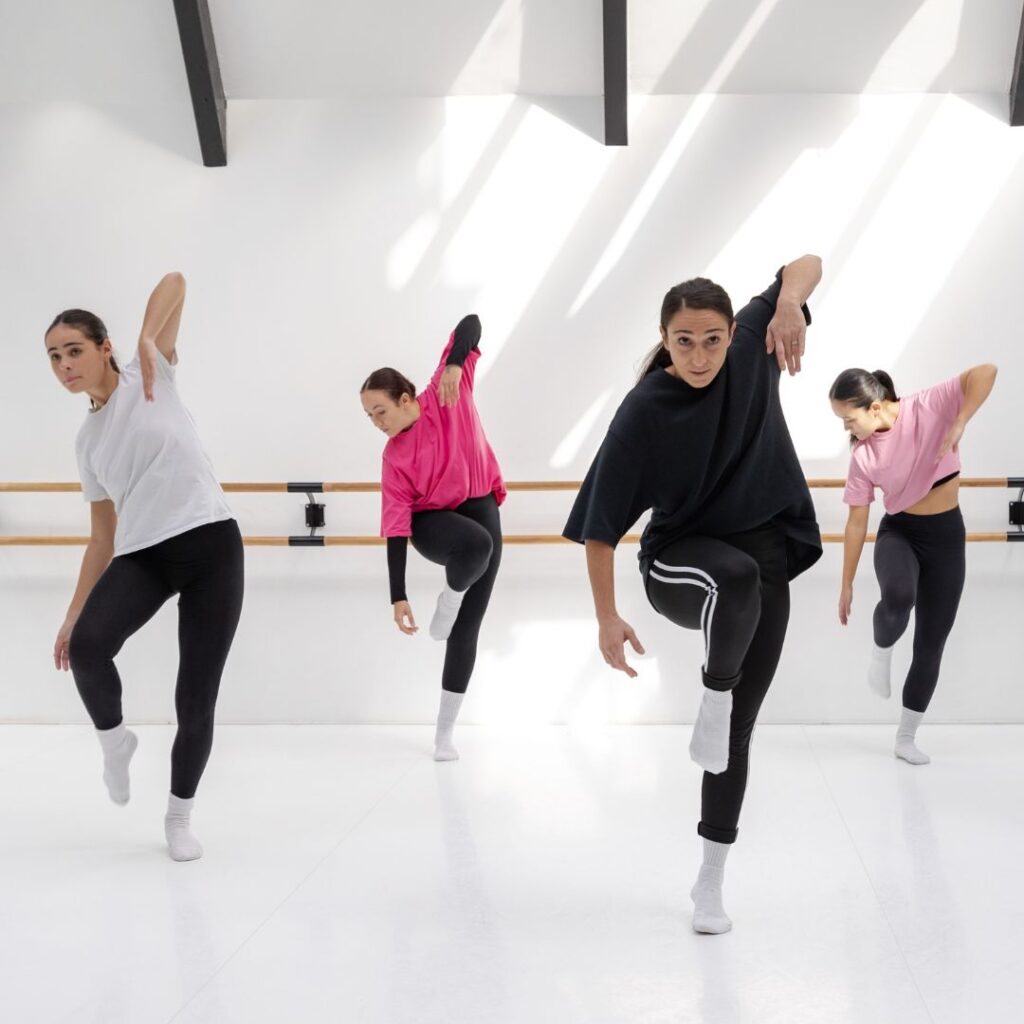
No experience needed – just bring your curiosity, comfy clothes and love for music.
Sydney Swan, our instructor, breaks down moves step by step, making complex routines easy to learn and fun to perform.
Expect an upbeat playlist, dynamic teamwork and plenty of chances to show off your style. K-Pop dance fuels your fitness, sparks creativity, and connects you with a community that celebrates joy through movement.
REGISTER – Tuesday, Nov 4, 2025 from 12 to 1pm, Exchange District Campus, P107.
Mini Golf Scavenger Hunt (NDC)
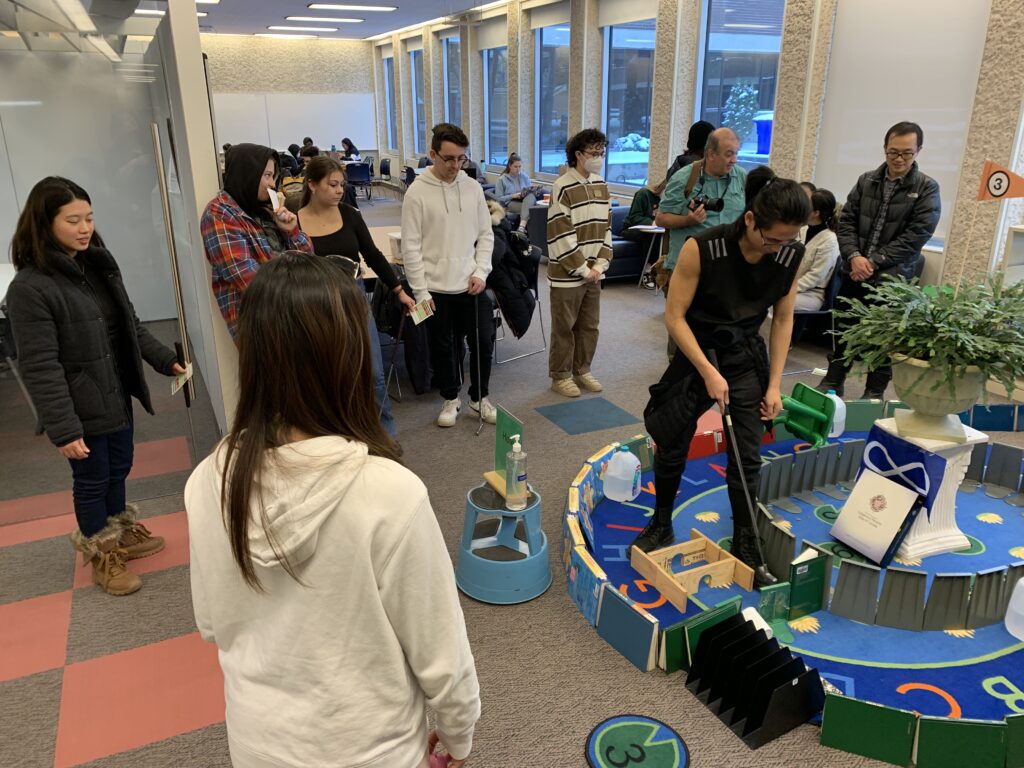
This year mini-golf meets campus-wide scavenger hunt! Explore the Notre Dame campus scouting out the different mini-golf holes hosted by a variety of RRC Polytech’s departments.
Start your tour in the Library Hallway, get your scorecard and complete the first hole! When you’ve completed the course, return to the Library Hallway with your filled-out scorecard to enter the prize draw.
Never played before? You’ll still have loads of fun and maybe score a hole-in-one!
Drop-in: Come as a group or on your own. Tuesday, November 4, 2025 from 11:00am to 1:00 pm, start in the Library Hallway.
Feast and Friends – A Buffet of Connections and Conversations (NDC)

Feast and Friends invites you to share a warm bowl of stew while sparking fresh connections. Gather around the table, join in lighthearted icebreakers and discover new conversations that flow with ease. Laughter, good food and relaxed activities create a welcoming space where friendships grow and community strengthens.
Enjoying a meal with others creates more than just full plates, it builds resilience, strengthens mental health and reminds students that support and friendship grow stronger when shared.
Every bowl of stew comes with a side of connection, and Bannock!
REGISTER – Tuesday, Nov 4, 2025 from 4pm to 6pm, Notre Dame Campus, The Cave
Wednesday
Pop-Up Cat Café (NDC)
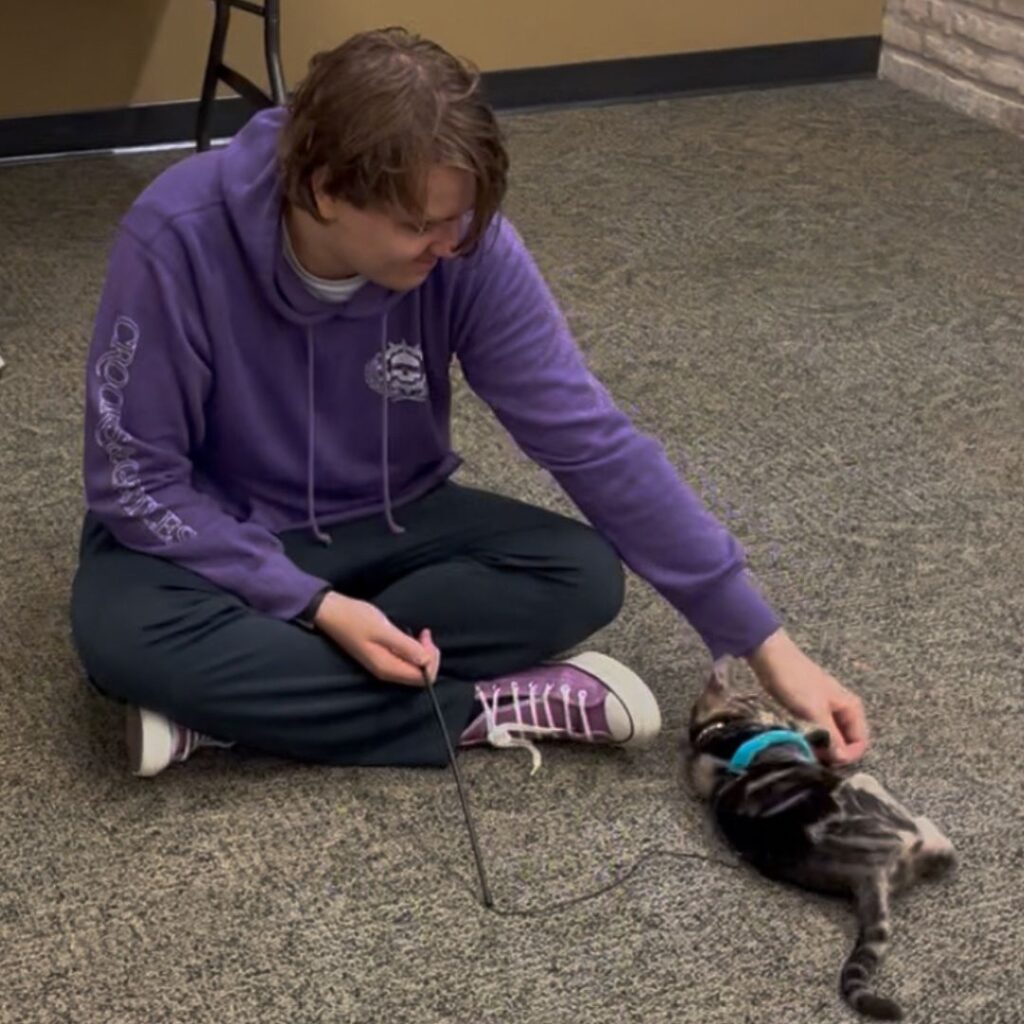
Thrive Week, in collaboration with Tails of Freedom Inc., invites you to come and take a break! Indulge in a Paw-sitively Purrrfect experience and relax and unwind with some cuddly companions.
Donations are encouraged! Sign up now as spots fill up fast! No walk-in availability.
REGISTER Now!
Date: November 5, 2025
Time: 11:30am to 1:30pm (sign up here for a 30-minute slot)
Location: NDC – E108
Mini Massages (EDC)
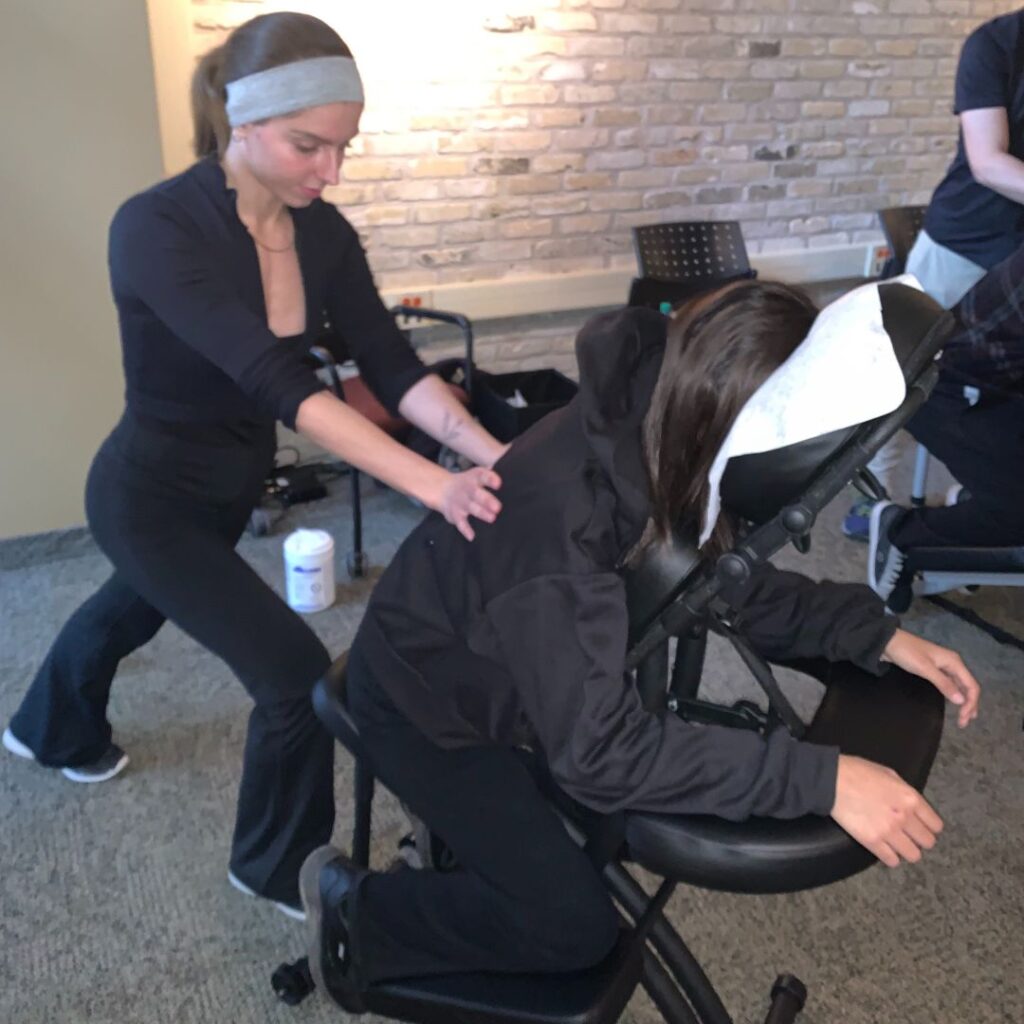
Take ten minutes to pause and let stress melt away.
Enjoy a relaxing chair massage right on campus, delivered by Licensed Registered Massage Therapists (RMTs) who ease tension, calm your mind and restore focus. A quick reset lifts your energy, supports mental well-being and helps you return to your studies feeling clear and ready for what’s next.
REGISTER for one spot only – Exchange District Campus in P107 from 11:30am to 1:30pm.
Games and Popcorn Lunch (EDC)
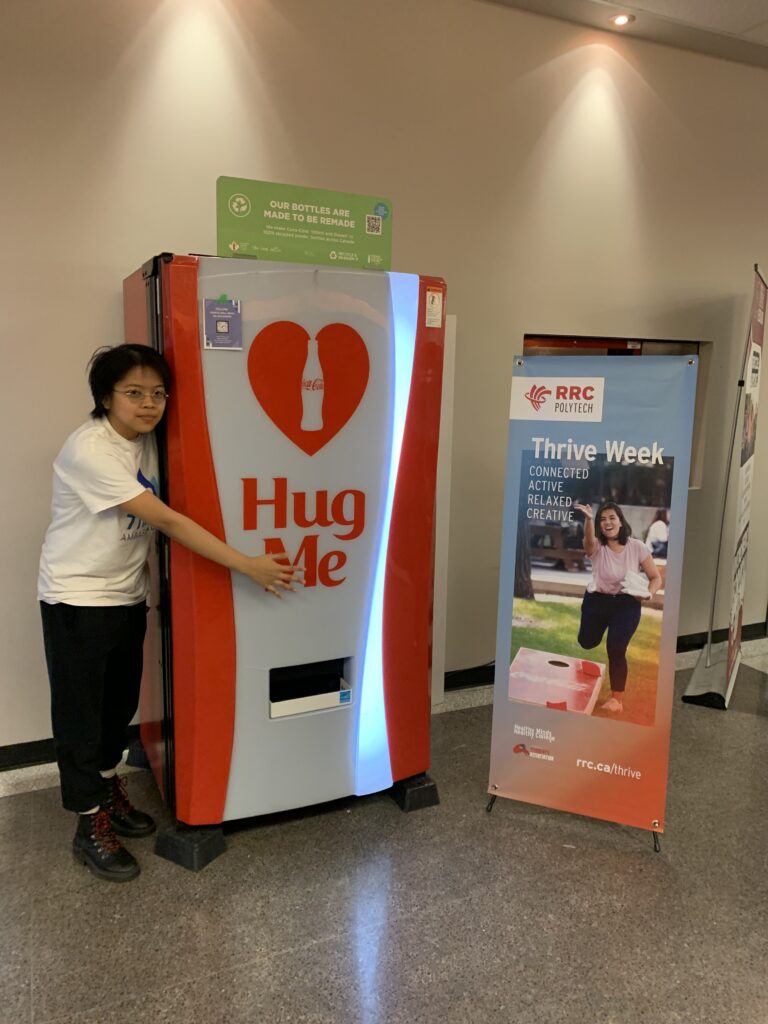
Drop in, grab some popcorn and jump into play! Challenge friends with giant games, share laughs over lunch and let your mind reset while you enjoy a well-deserved break.
Playful moments lift stress, boost mood and create connections that strengthen your sense of balance during a busy week. Take this time to recharge, refresh and return to class with new energy.
The Coca-Cola Hug Machine will be onsite again this year. You hug it, it returns the favour with a Coke. Because vending machines have feelings too.
DROP-IN – Exchange District Campus, Wednesday, November 5, 2025, 11:30am to 1:30pm, in the Dining Hall near Tim Hortons.
Gentle Flow Yoga (NDC and Virtual)
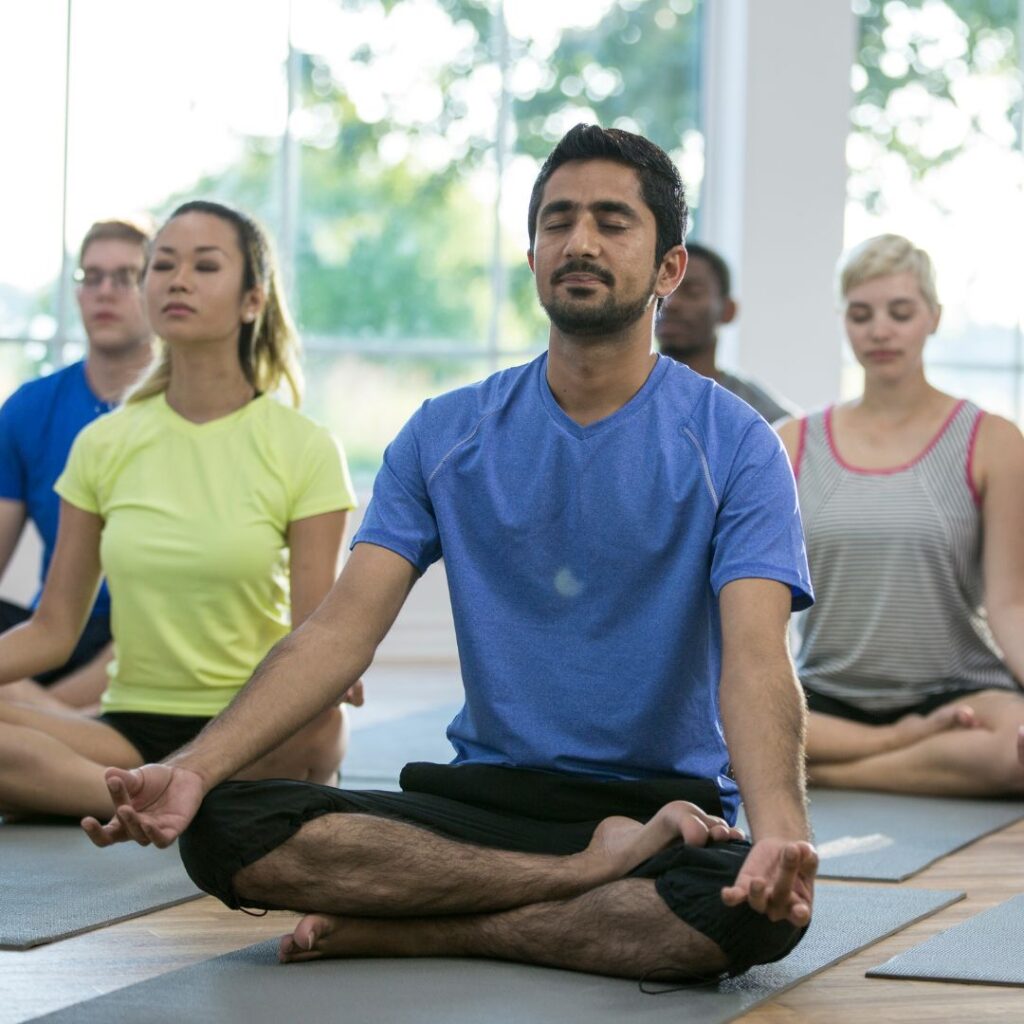
Take some time to unwind and reconnect with your body with yoga instructor Jaimie Bristow. A class for all levels focusing on slow rhythmic movements and long gentle stretching to explore opening all areas of the body. Class begins and ends with varying forms of pranayama (breathwork), and/or mindfulness based stress reduction techniques.
Suitable for all levels, mats are provided for in-person sessions.
Thursday
Jig’n Time with Dean Davis (NDC)
Jigging has brought Métis people together for generations — it’s more than just dance, it’s a celebration of identity, community, and resilience.
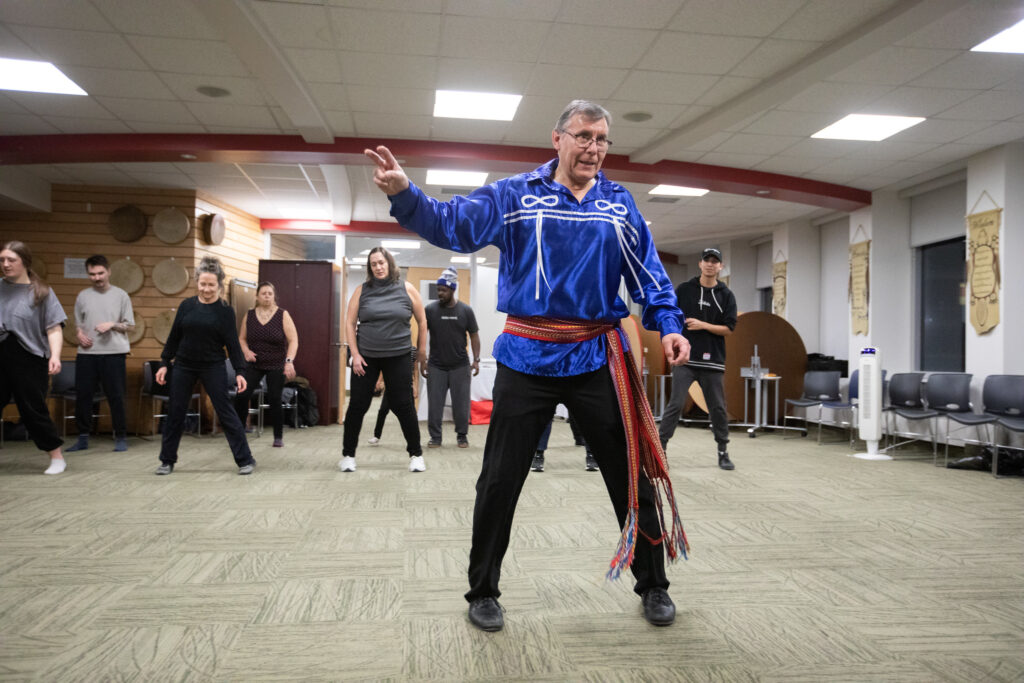
Join us at the Indigenous Support Centre for Jig’n Time, an energetic midday session of jigging and square dancing led by renowned instructor Dean Davis. Whether you’re a beginner or seasoned stepper, come connect through rhythm, laughter and tradition as part of our Thrive Week celebrations.
So grab your dancing shoes — let’s keep the tradition alive, one step at a time!
REGISTER – Thursday, November 6, 2025 in F205 from 12 to 1pm, Notre Dame Campus
Dean Davis – Métis Dance Instructor and Performer – For over two decades, dance has been a central part of Dean Davis’s life. Over the past ten years, he has dedicated himself to training dancers of all ages and skill levels in the vibrant traditions of Métis jigging and square dancing, sharing both technique and cultural knowledge with communities across Canada and the northern United States.
Dean’s performance career includes more than 400 shows with renowned groups such as the Asham Stompers and the Métis Club Traditional Dancers. His dancing has taken him across Manitoba and to stages in Saskatchewan, Ontario, Alberta, North Dakota, Minnesota, and Wisconsin, where he has helped bring Métis culture to life through movement and storytelling.
Remarkably, Dean began his own dance journey at the age of 40 at the Métis Club of Winnipeg. There, he first learned to jig and soon joined the Asham Stompers—a celebrated dance troupe known for showcasing the Métis jig on international stages. His late start and rapid rise as a performer and instructor speak to his passion, discipline, and deep respect for the cultural heritage he now helps preserve and pass on to the next generation of Métis jiggers.
Mini Golf Scavenger Hunt (EDC)

New this year, mini-golf meets campus-wide scavenger hunt downtown too! Explore the Exchange District Campus scouting out the different mini-golf holes hosted by a variety of RRC Polytech’s departments.
Start your tour in the Roblin Centre Atrium, get your scorecard and complete the first hole! When you’ve completed the course, return to the Atrium with your filled-out scorecard to enter the prize draw.
Never played before? You’ll still have loads of fun and maybe score a hole-in-one!
Drop-in: Come as a group or on your own. Thursday, November 6, 2025 from 11:00am to 1:00 pm, start at Roblin Centre Atrium.
Mini Massages (NDC)

Take ten minutes to pause and let stress melt away.
Enjoy a relaxing chair massage right on campus, delivered by Licensed Registered Massage Therapists (RMTs) who ease tension, calm your mind and restore focus. A quick reset lifts your energy, supports mental well-being and helps you return to your studies feeling clear and ready for what’s next.
REGISTER for one spot only – Notre Dame Campus in The Cave, DM30, from 11:30am to 1:30pm.
Feast and Friends – A Buffet of Connections and Conversations (EDC)

Feast and Friends invites you to share a warm bowl of stew while sparking fresh connections. Gather around the table, join in lighthearted icebreakers and discover new conversations that flow with ease. Laughter, good food and relaxed activities create a welcoming space where friendships grow and community strengthens.
Enjoying a meal with others creates more than just full plates, it builds resilience, strengthens mental health and reminds students that support and friendship grow stronger when shared.
Every bowl of stew comes with a side of connection, and Bannock!
REGISTER – Thursday, Nov 6, 2025 from 4pm to 6pm, Exchange District Campus, Skyfold Classrooms, E235 & E236
Amazing Race – Mini Game Competition: Get Ready for Sports, Fun, and Friends! (NDC)
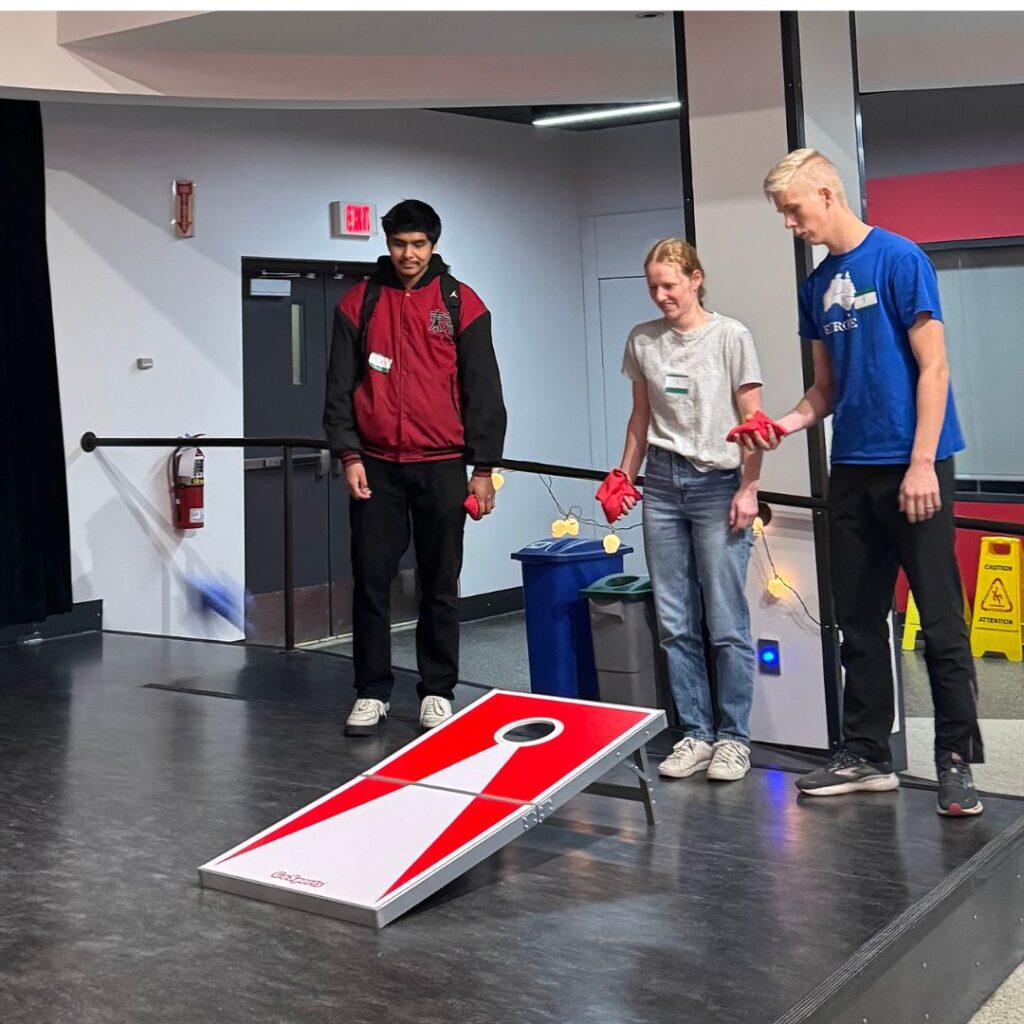
Calling all students! Join us for an exciting Mini-Game Competition where fun meets fitness. This event is designed for teams of three, but you can register as an individual, duo, or trio—it’s up to you! You’ll compete in six fun-filled mini-games, including basketball, volleyball, badminton, table tennis, and more.
At each station, teams will earn puzzle pieces after completing a challenge. Collect all the pieces, complete your puzzle, and race to the finish line at the South Gym stage! The first team to finish wins a $20 Tim Hortons gift card each.
Ready to have fun, make friends, and compete? See you in the library hallway for the start of this unforgettable event!
REGISTER Today!
When: Nov 6, 2025, 4:00 PM to 5:30 PM
Where: Start at the Library Hallway, Finish at the South Gym Stage
Prizes: Tim Hortons gift cards, and more!
Friday
Pop-Up Cat Café (EDC)
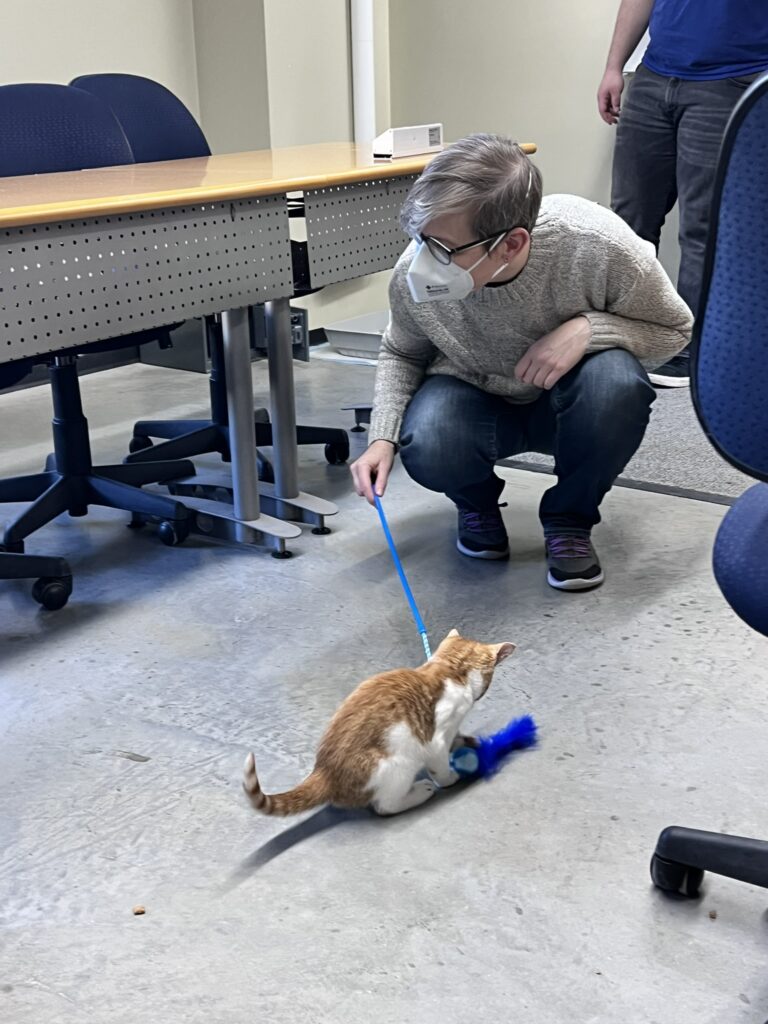
Thrive Week, in collaboration with Tails of Freedom Inc., invites you to come and take a break! Indulge in a Paw-sitively Purrrfect experience and relax and unwind with some cuddly companions.
Donations are encouraged! Sign up now as spots fill up fast! No walk-in availability.
Date: November 7, 2025
Time: 11:30am to 1:30pm (sign up here for a 30-minute slot)
Location: EDC – P107
Games and Popcorn Lunch (NDC)
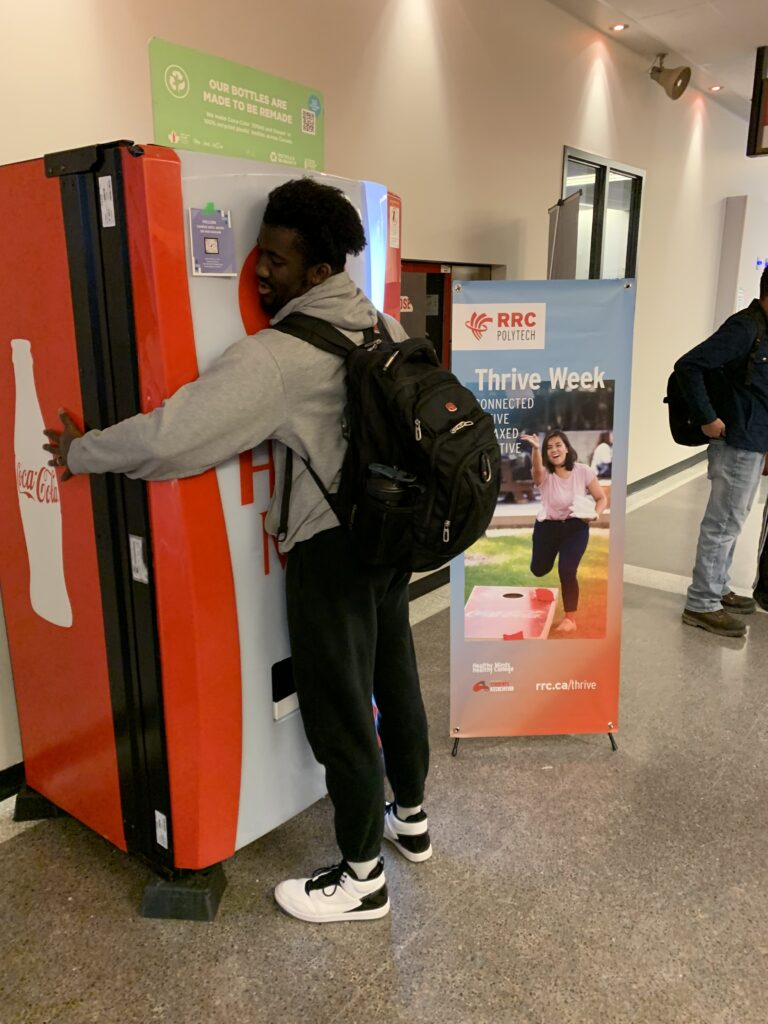
Drop in, grab some popcorn and jump into play! Challenge friends with giant games, share laughs over lunch and let your mind reset while you enjoy a well-deserved break.
Playful moments lift stress, boost mood and create connections that strengthen your sense of balance during a busy week. Take this time to recharge, refresh and return to class with new energy.
The Coca-Cola Hug Machine will be onsite again this year. You hug it, it returns the favour with a Coke. Because vending machines have feelings too.
Notre Dame Campus, Friday, November 7, 2025, 11:30am to 1:30pm, The Cave, DM30
Saturday
FortWhyte Alive Wellness Walk
Step off campus and step into autumn’s beauty. Join fellow students and staff for a guided walk through FortWhyte Alive’s trails. As we stroll through forests, wetlands and prairie edges, we’ll pause to listen, look and breathe.
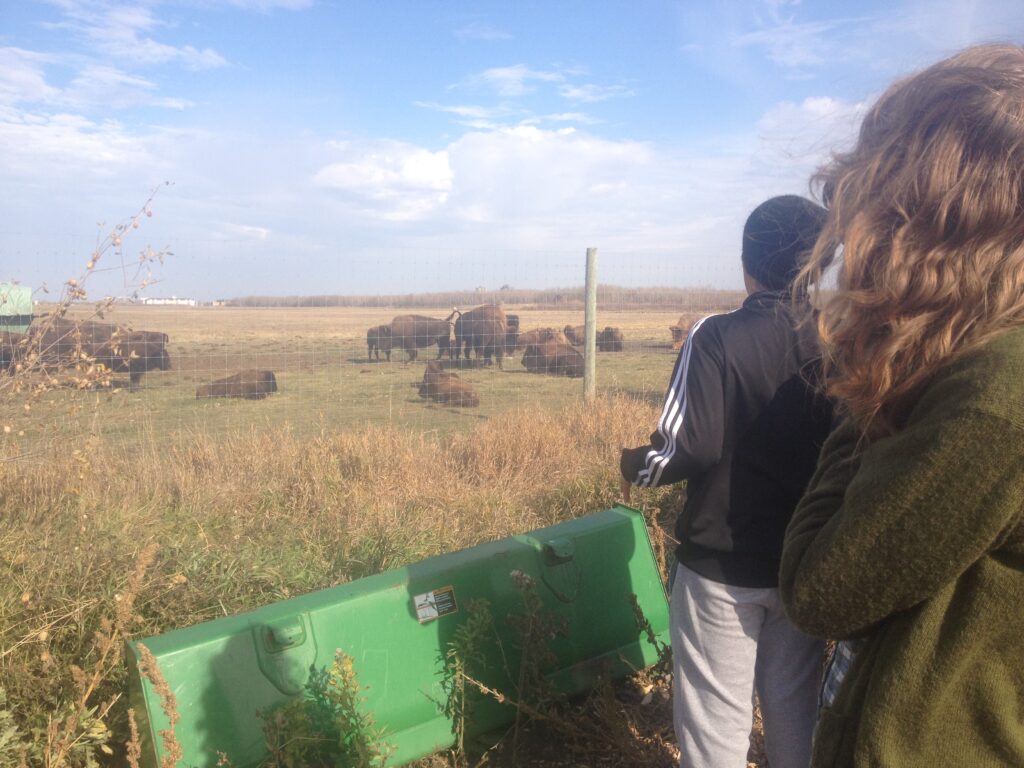
Along the walk, we’ll:
- Watch for birds in the marshes and forests (FortWhyte has recorded over 160 bird species).
- Learn about the resident plains bison herd, one of North America’s largest urban herds.
- Reflect on how time in nature supports mental well-being by reducing stress, boosting mood and grounding you in the present.
Immerse yourself in the changing leaves, the sound of wings, and the gentle rhythms of nature. It’s a peaceful yet powerful way to reconnect — with the land, with others, and with yourself.
REGISTER for your spot on the bus!
Session Details:
Saturday, Nov 8, 2025: Chartered Bus (Limited Seating).
Roundtrip Chartered Bus – 9:45am to 2pm
Round trip bus transportation to FortWhyte Alive is provided free of charge.
First Bus Pick Up: Please be ready outside the Manitou a bi Bii daziigae front doors, 319 Elgin, for pick up at 9:45am sharp.
Second Bus Pick Up: The bus will also stop at the Notre Dame Campus, in the front bus loop after EDC, around 10’ish depending on traffic.
We will drop off in reverse order, NDC then EDC.
Dress appropriately for the weather. The walk will be cancelled in the event of heavy winds, rain or hail. Students will be asked to sign a waiver.
